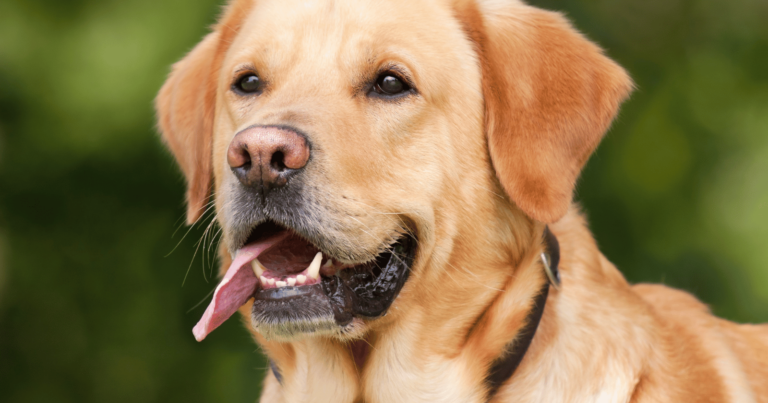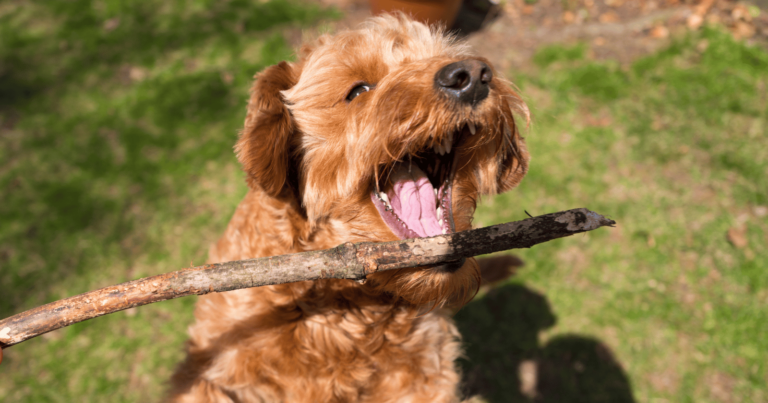Deciphering your dog’s behavior can sometimes feel like trying to understand a foreign language.
But if you know what to look for, you can start to decode what your furry friend is really trying to tell you.
Is that wagging tail a sign of happiness, or anxiety?
Does a raised paw mean they want to play, or are they feeling threatened?
Understanding your dog’s behavior is all about reading the subtle signs and signals they give off.
In this article, I’ll guide you through some of these behaviors so you can better understand your four-legged friend.
1. Tail wagging
Now, most people often equate a wagging tail with a happy dog.
It’s a common perception, right?
And while there’s some truth to this, it’s not the whole story.
You see, dogs use their tails to communicate a range of emotions – and not all of them are positive.
For instance, a stiff, rapidly wagging tail can indicate agitation or anxiety, while a relaxed, sweeping wag is generally a sign of happiness.
Much like humans use body language and facial expressions to convey feelings, dogs use their tails.
Next time you see that tail going back and forth, take a moment to observe how it’s moving.
Understanding the nuances in your dog’s tail wagging can give you valuable insight into their emotional state.
And remember, good communication isn’t just about understanding the words (or in this case, barks) – it’s about reading between the lines too.
2. Barking at seemingly nothing
I remember when my dog, Monty, would suddenly start barking at what appeared to be thin air.
It used to baffle me.
Was he seeing ghosts?
Was there something wrong with him?
Then I learned that dogs have incredibly keen senses.
Their hearing and sense of smell are far superior to ours.
So even though I couldn’t see or hear anything unusual, Monty could.
He might have been barking at a squirrel in a tree outside the window, or maybe he was smelling another dog that had recently passed by our house.
While it’s easy to dismiss this behavior as your dog being ‘silly’ or ‘overreactive’, it’s often their way of responding to the world around them, a world that they perceive differently than we do.
Understanding this has not only brought me closer to Monty but has also made me appreciate his unique canine perspective.
3. Circling before lying down

Have you ever noticed how dogs often circle before settling down to sleep?
This behavior dates back to their ancestors, the wolves.
In the wild, wolves would circle to pat down the grass or snow, creating a comfortable and safe place to rest.
They would also use this action to scare away any bugs or small creatures hiding in their sleeping spot.
Our domesticated dogs have inherited this trait.
So when you see your dog turning in circles before lying down, know they are carrying out an instinctual ritual passed down from their wild ancestors.
Isn’t it fascinating how even in our modern homes, traces of the wild still exist in our pets’ behaviors?
It’s a beautiful reminder of the rich history and evolution of our four-legged friends.
4. Chewing
Puppyhood is often synonymous with chewed up shoes and gnawed furniture corners.
But did you know that chewing is actually an important behavior for dogs, regardless of their age?
Chewing serves several purposes.
Related Stories from Black Pearl Dogs
For young pups, it’s a way to ease the discomfort of teething.
For adult dogs, it’s a form of entertainment and a way to keep their jaws strong and teeth clean.
Moreover, chewing can also be a stress-reliever for dogs.
Much like humans use fidget spinners or stress balls, dogs use chewing as a way to cope with anxiety or boredom.
However, it’s essential to provide safe and appropriate items for your dog to chew on.
Otherwise, they might resort to your favorite pair of shoes!
5. Sniffing everything
Ever gone on a walk with your dog and found yourself constantly waiting as they sniff every blade of grass, every tree, and every lamppost?
This is because for dogs, the world is primarily experienced through their noses.
They have an incredibly powerful sense of smell – up to 100,000 times more sensitive than humans.
When your dog sniffs, they are gathering information about their environment.
They can pick up on who’s been there before them, what they ate, and even their emotional state.
It’s their way of understanding and interacting with the world.
Giving them the time and freedom to explore through sniffing can significantly enrich their walks and overall well-being.
6. Following you around

It’s quite touching…
When your dog follows you from room to room, watching your every move with those loving eyes.
This behavior is a testament to the deep bond between humans and dogs.
Dogs are naturally social creatures.
In the wild, they live in packs and rely on each other for survival.
When you bring a dog into your home, you become their pack.
They follow you around because they feel safe and secure in your presence.
It’s not just about being near their food source or hoping for a scratch behind the ears.
It’s about companionship, love, and trust.
7. Pawing at you
When a dog paws at you, it can mean a variety of things.
It could be their way of getting your attention, asking for something, or even expressing their affection.
For instance, my own dog, Monty, often paws at me when he’s ready for our routine evening walk.
It’s his way of reminding me that it’s time to grab her leash and head out.
On the other hand, pawing can also be a sign of anxiety or stress in some dogs.
It’s important to observe your dog’s overall behavior and body language to understand the context behind their pawing.
Every dog is unique and communicates in their own way.
The more time you spend with your furry friend, the better you’ll understand their specific behaviors and what they’re trying to tell you.
Understanding is key
The complexities of dog behavior are deeply interwoven with their instincts, senses, and experiences.
One such instinct is their innate ability to communicate through subtle body language and behaviors.
This language, while different from ours, carries a depth of feeling and intent that is incredibly profound.
As their caregivers, it’s our responsibility to understand and respect these behaviors, giving them the space and patience they need to express themselves.
After all, a deeper understanding of our furry friends not only enhances their lives but enriches ours as well.













